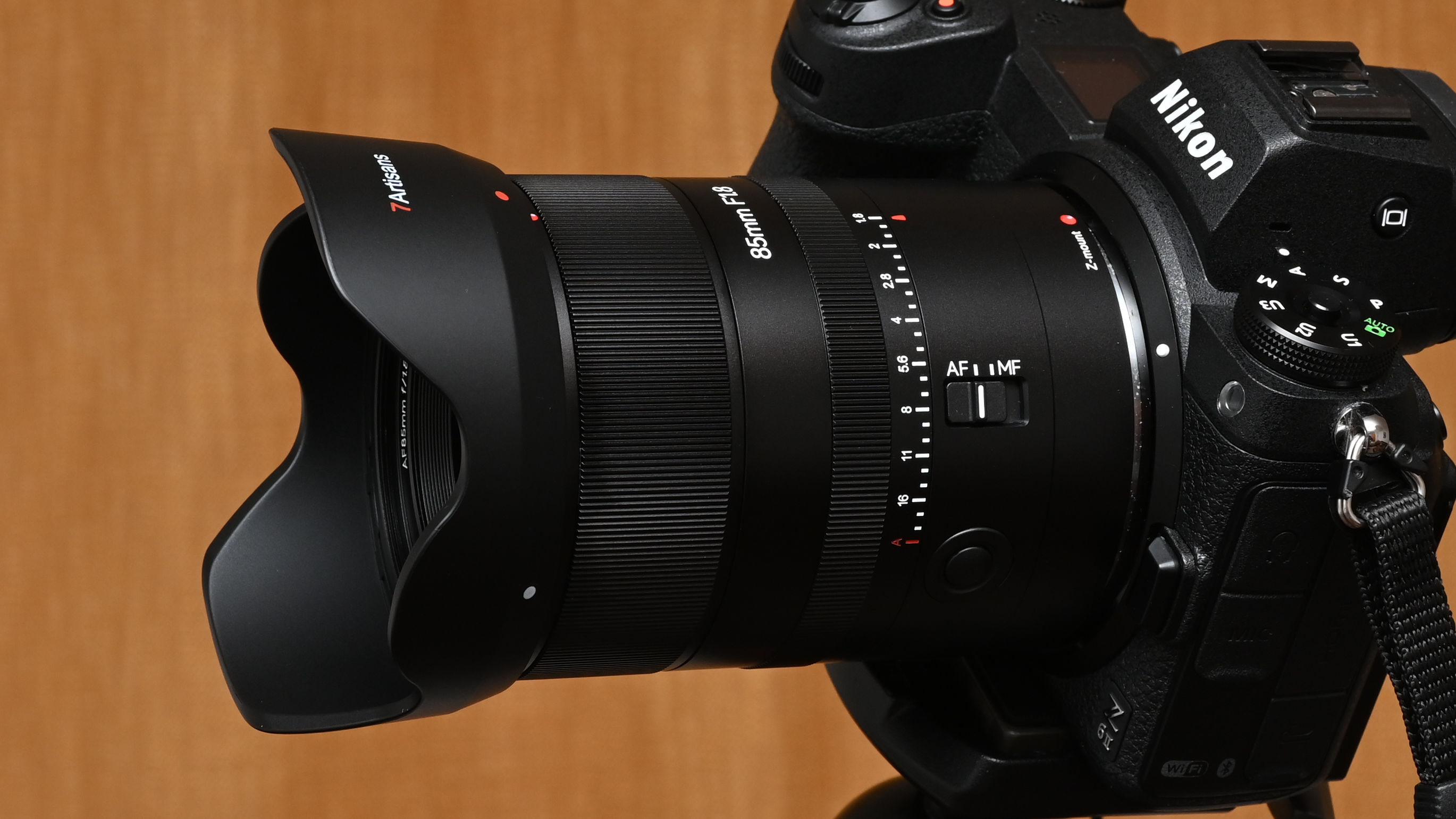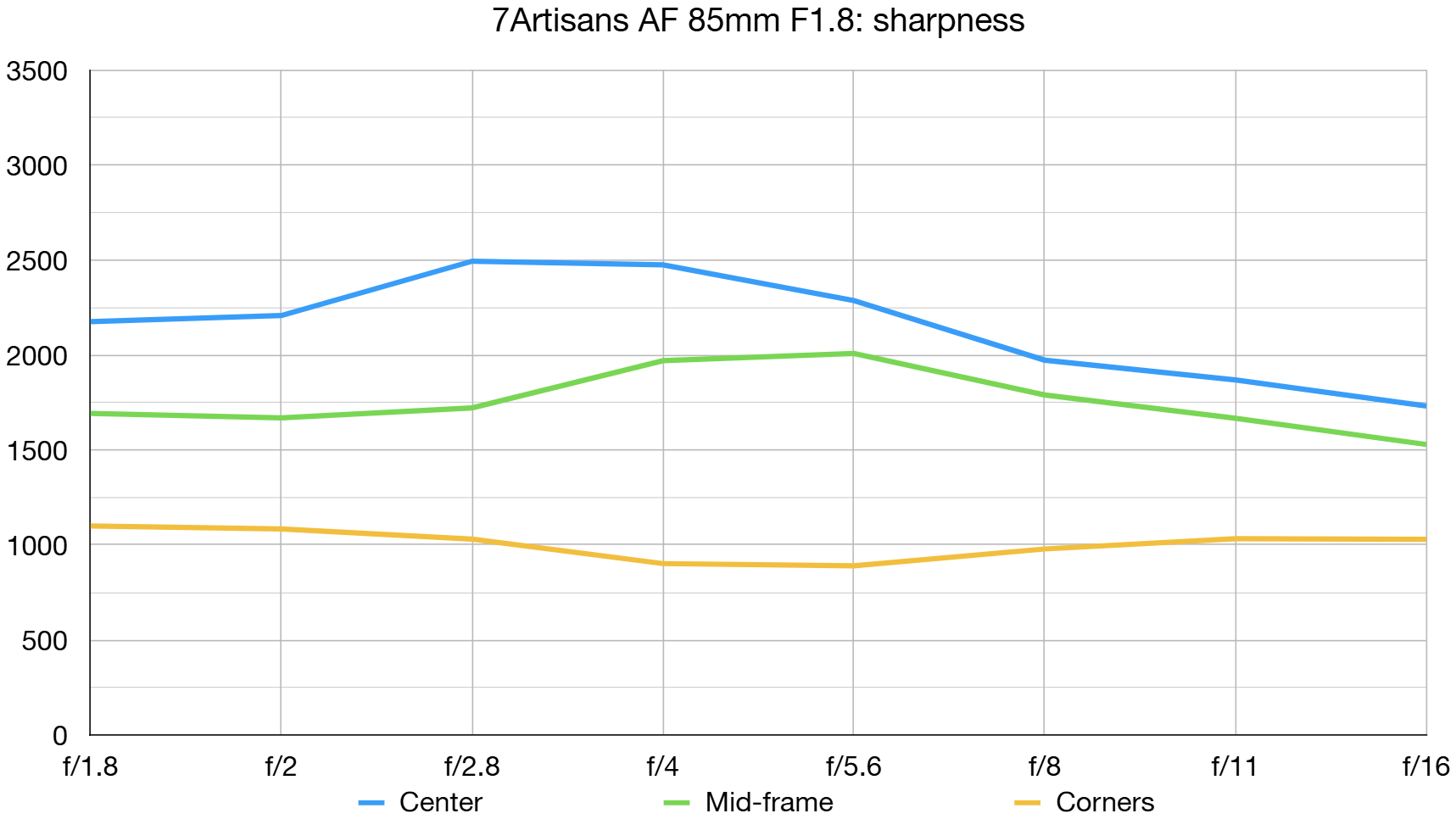
I’ve been impressed with some of 7Artisans’ lenses over the last few years, from the super-fast 50mm f/1.05 manual-focus standard prime to the 10mm f/2.8 Fish-Eye, which I liked so much when I reviewed it that I went straight out and bought one. As with the more 7Artisans AF 50mm f/1.8, this 85mm short telephoto lens gains the bonus of full electronic communication with the camera body and the luxury of autofocus. Even so, the purchase price remains much more affordable than for equivalent own-brand lenses from camera manufacturers, as well as undercutting the cost of more directly competing Chinese alternatives. At this price, you can’t expect it to be the best 85mm lens in the world, but it certainly aims to be worthy of consideration if you’re after one of the best portrait lenses to suit a tight budget.

7Artisans AF 85mm F1.8: Specifications
7Artisans AF 85mm F1.8: Price
Launched in late 2024, the full-frame compatible 7Artisans AF 85mm F1.8 is available in Nikon Z (FX), Sony E (FE), and Leica L mount options. As such, it goes up against own-brand lenses including the Nikon Z 85mm f/1.8 S at $697/£689, the Sony FE 85mm f/1.8 at $548/£499 and the Panasonic Lumix S 85mm f/1.8 at $498/£599.
It’s no surprise that this independently manufactured Chinese lens costs much less than own-brand competition but, even with that in mind, it’s remarkably inexpensive for quite a sophisticated lens, with a price tag of just $299/£279. It therefore also undercuts more direct Chinese competition including the Viltrox AF 85mm f/1.8 at $339/£325 and the Yongnuo YN85mm f/1.8 DF DSM at $379/£305, both of which are available in Nikon Z and Sony E mount options.
7Artisans AF 85mm F1.8: Design & Handling
I’ll start with the glass, which seems a reasonable place to begin with any camera lens. The 7Artisans is based on 10 elements arranged in 7 groups, with internal focusing so the front element neither extends nor rotates, which is a bonus when using filters. Two ED (Extra-low Dispersion) and two HRI (High Refractive Index) elements are included, aiming to enhance clarity and color rendition while reducing color fringing. Multi-layer coatings are also applied to minimize ghosting and flare.

From a handling perspective, the lens is nicely compact and lightweight, measuring 72x96mm and weighing 438g, with a modestly sized 62mm filter thread, as per the sibling 7Artisans AF 50mm f/1.8, which is also a similar size and weight. You can chop and change between the two lenses without noticing much difference. Further similarities include a de-clicked aperture control ring, which is handy when shooting video. I’d have liked to see an iris locking switch, to lock the ring in its Auto position when controlling the aperture from the host camera body but this is absent, so you need to be careful not to nudge it accidentally.

Back on the plus side, there’s an AF/MF focus mode switch, which avoids the time and effort involved in rummaging around camera menus to make the change. It’s something that I always like to see but is often omitted in low-budget lenses.

An extra bonus in the 85mm lens compared with the 50mm, is that it adds a customizable function button, which I’d generally use for AF-hold. The only missed trick is that there’s no second button at a 90-degree offset. Often featured, this enables the function to be duplicated so that it neatly falls under the thumb in portrait as well as landscape orientation shooting.

The build feels solid and the lens is nicely finished, with a high-quality plastic barrel and metal mounting plate. The latter includes a USB-C port, for applying firmware updates if and when needed. This helps to ensure compatibility with future camera launches, or for keeping abreast with unexpected changes in the camera firmware itself.

As I’d expect, the lens is supplied complete with a petal-shaped hood and a pinch-fit front cap. That said, there are plenty of low-budget own-brand lenses from the likes of Canon and Nikon, for which the hood is sold separately as an ‘optional extra’.

7Artisans AF 85mm F1.8: Performance
I tested the Z-mount version of the 7Artisans AF 85mm on my trusty Nikon Z 6II camera body. I found that autofocus speed is a little more pedestrian than I’m used to but the now typical linear stepping motor system delivers very smooth and virtually silent operation when shooting video. True to type, the manual focus ring is electronically coupled and enables precise adjustments, but without an abundance of tactile feedback. Switching back to autofocus mode, I found the lens works well with my Nikon camera’s face/eye recognition and tracking options. That’s a strong point, given that the focal length and aperture combination are so ideal for portraiture.

Sharpness is very good in the central region of the frame, even when shooting wide-open at f/1.8. This aperture also delivers pleasingly soft bokeh, with a natural-looking transition between focused and defocused areas within a scene. The 11-blade aperture helps to keep bokeh disks (formed by defocused lights or bright spots) well-rounded when stopping down a little from the widest aperture. Bokeh disks are also free of the onion ring effect and remain fairly well rounded out towards the edges and corners of the frame.

7Artisans AF 85mm F1.8: Sample Images
The following gallery of example images was shot at the covered street market in the Somerset city of Wells in the UK. Weather conditions were dull and dreary but the lens did well to maintain good clarity and contrast. Most of the images were shot wide-open at f/1.8, to demonstrate the relative merits of sharpness and bokeh, surely the main reason for investing in a fast 85mm prime lens.











7Artisans AF 85mm F1.8: Lab Results
We run a range of lab tests under controlled conditions, using the Imatest Master testing suite. Photos of test charts are taken across the range of apertures and zooms (where available), then analyzed for sharpness, distortion and chromatic aberrations.
We use Imatest SFR (spatial frequency response) charts and analysis software to plot lens resolution at the center of the image frame, corners and mid-point distances, across the range of aperture settings and, with zoom lenses, at four different focal lengths. The tests also measure distortion and color fringing (chromatic aberration).
Sharpness

Center sharpness is superb, even wide open at f/1.8, and remains so right though to f/16. By contrast, corner sharpness is comparatively soft. But for a portrait lens where sharpness matters most for subject sharpness in the central region, this may not be a deal-breaker in real-world shooting.
Fringing:

Color fringing is generally negligible, but it does stray into noticeable levels at narrower apertures. Even so, it never becomes distracting.
Distortion: 0.83
There’s a little pincushion distortion, but it’s of a low order and is generally unnoticeable in real-world shooting.
7Artisans AF 85mm F1.8: Verdict
I feel that with its 85mm focal length and f/1.8 aperture rating, the 7Artisans AF 85mm F1.8 is an ideal lens for head-and-shoulders portraiture and still life photography. For really tight head shots, it also works well on APS-C format Nikon Z, Sony E and Leica L-mount mirrorless cameras, giving an ‘effective’ focal length of 127.5mm. I like the lens’s handling, with its stepless aperture control ring and customizable function button, although autofocus speed is a little slower than I was expecting. I’m pleased with its overall image quality which I feel is the main factor in the equation. All things considered, it’s a very nice lens and a genuine bargain at the price.

Should you buy the 7Artisans AF 85mm F1.8?
✅ Buy this...
- You want a fast prime for portraiture and still life photography and you’re on a tight budget. This one’s standout value for money.
- You’re content with an f/1.8 aperture rating, rather than feeling the need for an even faster f/1.4 or f/1.2 prime lens.
🚫 Don't buy this...
- You’d rather spend more and buy an own-brand Nikon, Sony or Panasonic 85mm f/1.8 lens, to match your camera system.
- You need a lens that features weather-seals, which are unsurprisingly lacking in this one with its budget-friendly price tag.







